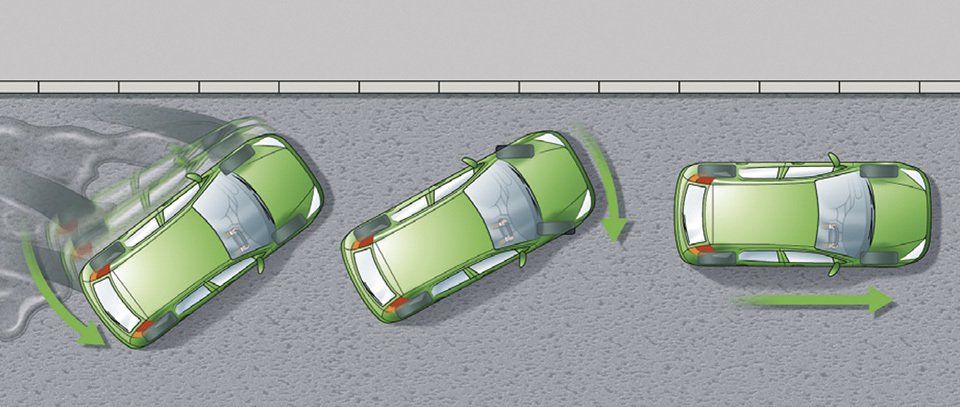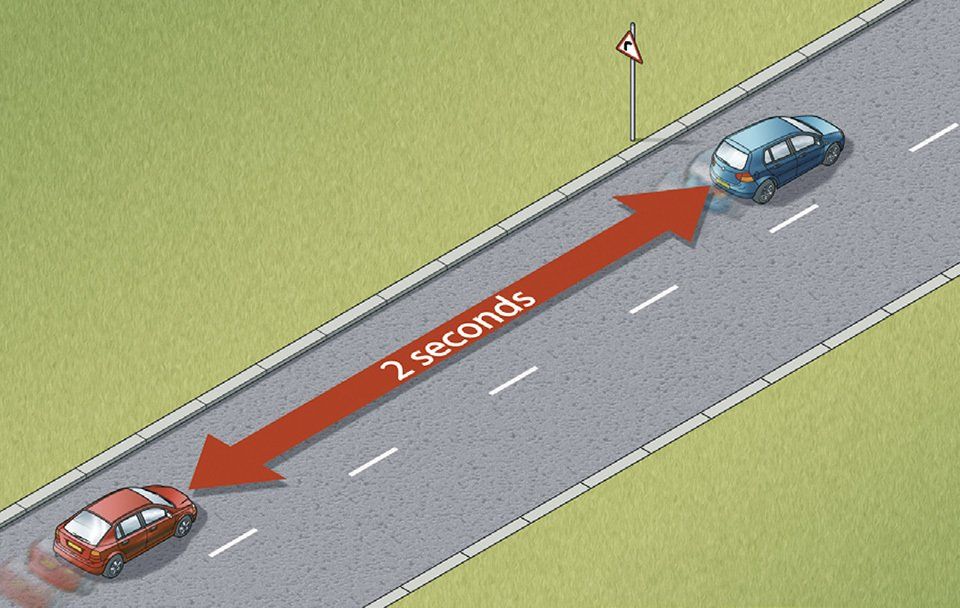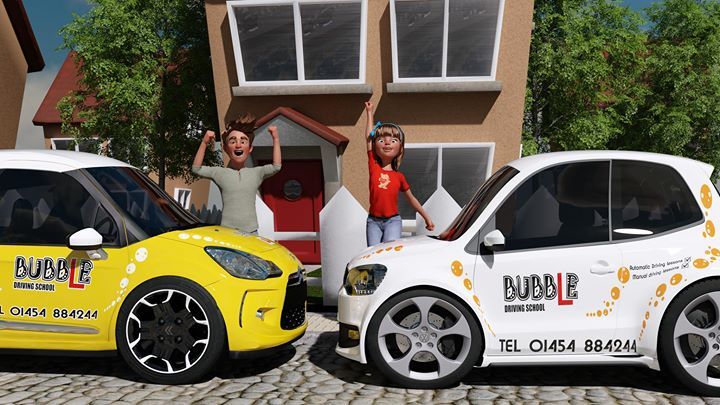Limited lessons available
Author name
Rules 113-126
Part 2
Signals, stopping procedures, lighting, control of the vehicle, speed limits, stopping distances, lines and lane markings and multi-lane carriageways, smoking, mobile phones and sat nav.
With the popularity of our blogs covering the whole of the UK highway code, well be starting a new mini series covering General rules, techniques and advice for all drivers and riders. Todays post will cover Rules 113-126.
Continuing our mini series part to will be covering rules, techniques and advise for stopping procedures, lighting, control of the vehicle, speed limits, stopping distances, lines and lane markings and multi-lane carriageways, smoking, mobile phones and sat nav.
The rules in The Highway Code do not give you the right of way in any circumstance, but they advise you when you should give way to others. Always give way if it can help to avoid an incident.
The highway code can be bought in shops and online, as well as a free version on the UK goverments website, click here to access the free to use highway code.
And for people wanting a more visual highway code or those who struggle with the technical talk, the Colour Book Academy offer a great new highway code, that allows you to colour in but every rule of the highway code is explained with diagrams and scenario's for each and every rule, this is a great resource for those wanting something abit more fun with learning. Click here to order yours today.
Rules 113-116 Lighting requirments
Rule 113
You MUST
Night (the hours of darkness) is defined as the period between half an hour after sunset and half an hour before sunrise.
Laws RVLR regs 3, 24 & 25 (In Scotland - RTRA sect 82 (as amended by NRSWA, para 59 of sched 8))
Rule 114
You MUST NOT
Law RVLR reg 27
Rule 115
You should also
Braking
Rule 117
In normal circumstances. The safest way to brake is to do so early and lightly. Brake more firmly as you begin to stop. Ease the pressure off just before the vehicle comes to rest to avoid a jerky stop.
Rule 118
In an emergency. Brake immediately. Try to avoid braking so harshly that you lock your wheels. Locked wheels can lead to loss of control.
Rule 119
Skids. Skidding is usually caused by the driver braking, accelerating or steering too harshly or driving too fast for the road conditions. If skidding occurs, remove the cause by releasing the brake pedal fully or easing off the accelerator. Turn the steering wheel in the direction of the skid. For example, if the rear of the vehicle skids to the right, steer immediately to the right to recover.
Continuing our mini series part to will be covering rules, techniques and advise for stopping procedures, lighting, control of the vehicle, speed limits, stopping distances, lines and lane markings and multi-lane carriageways, smoking, mobile phones and sat nav.
The rules in The Highway Code do not give you the right of way in any circumstance, but they advise you when you should give way to others. Always give way if it can help to avoid an incident.
The highway code can be bought in shops and online, as well as a free version on the UK goverments website, click here to access the free to use highway code.
And for people wanting a more visual highway code or those who struggle with the technical talk, the Colour Book Academy offer a great new highway code, that allows you to colour in but every rule of the highway code is explained with diagrams and scenario's for each and every rule, this is a great resource for those wanting something abit more fun with learning. Click here to order yours today.
Rules 113-116 Lighting requirments
Rule 113
You MUST
- ensure all sidelights and rear registration plate lights are lit between sunset and sunrise
- use headlights at night, except on a road which has lit street lighting. These roads are generally restricted to a speed limit of 30 mph (48 km/h) unless otherwise specified
- use headlights when visibility is seriously reduced (see Rule 226).
Night (the hours of darkness) is defined as the period between half an hour after sunset and half an hour before sunrise.
Laws RVLR regs 3, 24 & 25 (In Scotland - RTRA sect 82 (as amended by NRSWA, para 59 of sched 8))
Rule 114
You MUST NOT
- use any lights in a way which would dazzle or cause discomfort to other road users, including pedestrians, cyclists and horse riders
- use front or rear fog lights unless visibility is seriously reduced. You MUST switch them off when visibility improves to avoid dazzling other road users (see Rule 226).
Law RVLR reg 27
Rule 115
You should also
- use dipped headlights, or dim-dip if fitted, at night in built-up areas and in dull daytime weather, to ensure that you can be seen
- keep your headlights dipped when overtaking until you are level with the other vehicle and then change to main beam if necessary, unless this would dazzle oncoming road users
- slow down, and if necessary stop, if you are dazzled by oncoming headlights.
Braking
Rule 117
In normal circumstances. The safest way to brake is to do so early and lightly. Brake more firmly as you begin to stop. Ease the pressure off just before the vehicle comes to rest to avoid a jerky stop.
Rule 118
In an emergency. Brake immediately. Try to avoid braking so harshly that you lock your wheels. Locked wheels can lead to loss of control.
Rule 119
Skids. Skidding is usually caused by the driver braking, accelerating or steering too harshly or driving too fast for the road conditions. If skidding occurs, remove the cause by releasing the brake pedal fully or easing off the accelerator. Turn the steering wheel in the direction of the skid. For example, if the rear of the vehicle skids to the right, steer immediately to the right to recover.
Rule 119: Rear of the car skids to the right. Driver steers to the right
Rule 120
ABS. If your vehicle is fitted with anti-lock brakes, you should follow the advice given in the vehicle handbook. However, in the case of an emergency, apply the footbrake firmly; do not release the pressure until the vehicle has slowed to the desired speed. The ABS should ensure that steering control will be retained, but do not assume that a vehicle with ABS will stop in a shorter distance.
Rule 121
Brakes affected by water. If you have driven through deep water your brakes may be less effective. Test them at the first safe opportunity by pushing gently on the brake pedal to make sure that they work. If they are not fully effective, gently apply light pressure while driving slowly. This will help to dry them out.
Rule 122
Coasting. This term describes a vehicle travelling in neutral or with the clutch pressed down. It can reduce driver control because
Rule 123
The Driver and the Environment. You MUST NOT leave a parked vehicle unattended with the engine running or leave a vehicle engine running unnecessarily while that vehicle is stationary on a public road. Generally, if the vehicle is stationary and is likely to remain so for more than a couple of minutes, you should apply the parking brake and switch off the engine to reduce emissions and noise pollution. However it is permissible to leave the engine running if the vehicle is stationary in traffic or for diagnosing faults.
Law CUR regs 98 & 107
Speed limits
Rule 120
ABS. If your vehicle is fitted with anti-lock brakes, you should follow the advice given in the vehicle handbook. However, in the case of an emergency, apply the footbrake firmly; do not release the pressure until the vehicle has slowed to the desired speed. The ABS should ensure that steering control will be retained, but do not assume that a vehicle with ABS will stop in a shorter distance.
Rule 121
Brakes affected by water. If you have driven through deep water your brakes may be less effective. Test them at the first safe opportunity by pushing gently on the brake pedal to make sure that they work. If they are not fully effective, gently apply light pressure while driving slowly. This will help to dry them out.
Rule 122
Coasting. This term describes a vehicle travelling in neutral or with the clutch pressed down. It can reduce driver control because
- engine braking is eliminated
- vehicle speed downhill will increase quickly
- increased use of the footbrake can reduce its effectiveness
- steering response will be affected, particularly on bends and corners
- it may be more difficult to select the appropriate gear when needed.
Rule 123
The Driver and the Environment. You MUST NOT leave a parked vehicle unattended with the engine running or leave a vehicle engine running unnecessarily while that vehicle is stationary on a public road. Generally, if the vehicle is stationary and is likely to remain so for more than a couple of minutes, you should apply the parking brake and switch off the engine to reduce emissions and noise pollution. However it is permissible to leave the engine running if the vehicle is stationary in traffic or for diagnosing faults.
Law CUR regs 98 & 107
Speed limits
| Speed limits | Built-up areas* | Single carriageways | Dual carriageways | Motor-ways |
|---|---|---|---|---|
| Types of vechile | mph (km/h) | mph (km/h) | mph (km/h) | mph (km/h) |
| Cars & motorcycles (including car derived vans up to 2 tonnes maximum laden weight) | 30 (48) | 60 (96) | 70 (112) | 70 (112) |
| Cars towing caravans or trailers (including car derived vans and motorcycles) | 30 (48) | 50 (80) | 60 (96) | 60 (96) |
| Buses, coaches and minibuses (not exceeding 12 metres in overall length) | 30 (48) | 50 (80) | 60 (96) | 70 (112) |
| Goods vehicles (not exceeding 7.5 tonnes maximum laden weight) | 30 (48) | 50 (80) | 60 (96) | 70 (112) |
| Goods vehicles (exceeding 7.5 tonnes maximum laden weight) in England and Wales | 30 (48) | 50 (80) | 60 (96) | 60 (96) |
| Goods vehicles (exceeding 7.5 tonnes maximum laden weight) in Scotland | 30 (48) | 40 (64) | 50 (80) | 60 (96) |
*The 30 mph limit usually applies to all traffic on all roads with street lighting unless signs show otherwise.
†60 mph (96 km/h) if articulated or towing a trailer.
Rule 124
You MUST NOT exceed the maximum speed limits for the road and for your vehicle (see the speed limits table). The presence of street lights generally means that there is a 30 mph (48 km/h) speed limit unless otherwise specified.
Law RTRA sects 81, 86, 89 & sched 6 as amended by MV(VSL)(E&W)
Rule 125
The speed limit is the absolute maximum and does not mean it is safe to drive at that speed irrespective of conditions. Driving at speeds too fast for the road and traffic conditions is dangerous. You should always reduce your speed when
Rule 126
Stopping distances image
Stopping Distances. Drive at a speed that will allow you to stop well within the distance you can see to be clear. You should
If you have to stop in a tunnel, leave at least a 5-metre gap between you and the vehicle in front.
†60 mph (96 km/h) if articulated or towing a trailer.
Rule 124
You MUST NOT exceed the maximum speed limits for the road and for your vehicle (see the speed limits table). The presence of street lights generally means that there is a 30 mph (48 km/h) speed limit unless otherwise specified.
Law RTRA sects 81, 86, 89 & sched 6 as amended by MV(VSL)(E&W)
Rule 125
The speed limit is the absolute maximum and does not mean it is safe to drive at that speed irrespective of conditions. Driving at speeds too fast for the road and traffic conditions is dangerous. You should always reduce your speed when
- the road layout or condition presents hazards, such as bends
- sharing the road with pedestrians, cyclists and horse riders, particularly children, and motorcyclists
- weather conditions make it safer to do so
- driving at night as it is more difficult to see other road users.
Rule 126
Stopping distances image
Stopping Distances. Drive at a speed that will allow you to stop well within the distance you can see to be clear. You should
- leave enough space between you and the vehicle in front so that you can pull up safely if it suddenly slows down or stops. The safe rule is never to get closer than the overall stopping distance (see Typical Stopping Distances diagram, shown above)
- allow at least a two-second gap between you and the vehicle in front on roads carrying faster-moving traffic and in tunnels where visibility is reduced. The gap should be at least doubled on wet roads and increased still further on icy roads
- remember, large vehicles and motorcycles need a greater distance to stop. If driving a large vehicle in a tunnel, you should allow a four-second gap between you and the vehicle in front.
If you have to stop in a tunnel, leave at least a 5-metre gap between you and the vehicle in front.
Rule 126: Use a fixed point to help measure a two-second gap
Check back Friday for our next part in our series, With part 3 of our five part mini series that's covering General rules, techniques and advice for all drivers and riders
The highway code printed is from the uk goverment website and under its open goverment licence, allows anyone to copy and share the code.
Check back Friday for our next part in our series, With part 3 of our five part mini series that's covering General rules, techniques and advice for all drivers and riders
The highway code printed is from the uk goverment website and under its open goverment licence, allows anyone to copy and share the code.
© 2025
Bubble Driving School. All rights reserved.
Website designed by
Website Sorted Bristol web design





